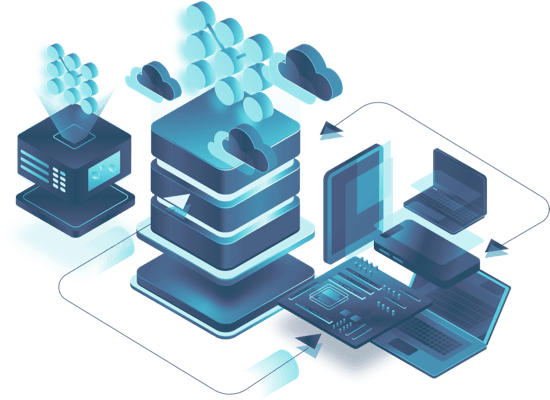The global economy is undergoing a transformation towards software-defined commerce. By 2033, the number of IoT devices worldwide is expected to double, surpassing 40 billion. That’s an average of 14 connected devices per household — not including the growing footprint across factories, farms, hospitals, and supply chains that dominate the global economic infrastructure.
As IoT adoption accelerates, so do the stakes for security and operations. Original Equipment Manufacturers (OEMs) must confront the reality that traditional, hardware-centric product strategies are no longer viable for remaining competitive. Building smarter devices is now only one facet of innovation; OEMs must also consider managing them securely, flexibly, and continuously long after they ship.
From devices to ecosystems: Why traditional product thinking falls short
As connected devices become more entrenched in the fabric of modern industry, the expectations placed on OEMs are shifting dramatically. It’s no longer enough to deliver a product that works on day one; success now depends on how well that product evolves and remains relevant over time.
With this market transformation, the driving themes are: software drives innovation, customer experience hinges on continuous delivery, and lifecycle management is a strategic imperative. Yet, many OEMs still operate under legacy assumptions, focused on launch dates, fixed-functionality hardware, and one-time sales.
To stay competitive, OEMs must confront four fundamental trends that are defining the next phases of IoT. Each trend represents both a challenge and an opportunity, and together, they define what it takes to thrive in a software-defined, security-conscious, and ever-expanding device ecosystem.
Trend 1: OEMs are still stuck in a hardware-first mentality
The pace of IoT innovation makes it clear that software is no longer a feature; it’s the foundation of connected products. Despite the importance of software, many OEMs continue to approach product development with a hardware-first mindset. Software and its implications are only considered late in the process rather than from the start.
The outdated hardware-first approach is increasingly unsustainable. In today’s market, the ability to deliver continuous software updates, security patches, and feature enhancements isn’t a value-add or a nice-to-have — it’s expected. Customers want connected products that evolve over time, improve after deployment, and stay protected against emerging threats.
But the shift to software-centric thinking requires more than just technological acumen. It demands cultural and organizational change. Product teams must think in terms of lifecycles, not launch dates. Engineering, operations, and business units need to align around agility and iteration, not static specs. Silos must fall to manage smart products seamlessly and continuously.
Without this mindset shift, OEMs risk falling behind competitors who already offer products with long-term adaptability, security, and customer experience in mind.
Trend 2: Lifecycle management is a competitive advantage
In the past, product success was largely determined at launch. As product offerings change and the market begins to demand dynamic software-centric offerings, the real challenge begins after the initial sale.
Connected devices must be managed, updated, secured, and monitored continuously, from design to decommissioning. That’s where strategic device lifecycle management (DLM) becomes a source of competitive advantage.
OEMs that treat DLM as an afterthought often struggle with fragmented update processes, compliance gaps, and unsustainable support costs. In contrast, forward-thinking organizations embed lifecycle management into the product strategy from the beginning — integrating secure over-the-air (OTA) updates, performance monitoring, remote troubleshooting, and compliance tracking into a single, scalable and robust framework.
The payoff is significant: faster and shorter release cycles, longer product lifespans, reduced maintenance overhead, and stronger customer loyalty. The ability to manage smart products seamlessly across the entire lifecycle becomes a key differentiator, especially as connected devices become more complex.
In a crowded market, it’s not just the most innovative products that win; it’s the ones that can adapt, improve, and stay secure over time.
Trend 3: Software reshapes business models
As software becomes central to product value, it’s also transforming how OEMs generate revenue. One-time hardware sales are giving way to recurring models — think subscriptions, service tiers, and software-enabled features. But, with this shift comes new pressure on operations, development teams, and customer support.
To succeed with software-defined products, OEMs must ensure that their internal processes can sustain rapid iteration, frequent updates, and a hyper-focus on user experience. This requires adopting agile development practices, streamlining release cycles, and eliminating the delays that often plague smart product launches.
It seems like a straightforward problem, however, many organizations still rely on legacy infrastructure and siloed workflows that weren’t built for this pace of change. Nearly half (45%) of new product launches face delays, often because teams are unprepared for the complexities of building and maintaining software at scale.1
Winning in this environment requires sustained product iteration while simultaneously rethinking how products are delivered, how success is measured, and how software innovation is funded and prioritized throughout the organization.
Trend 4: Cybersecurity is a maturity benchmark
The more connected devices an OEM deploys, the more complex and critical cybersecurity becomes. For many OEMs, securing IoT products is about checking the compliance boxes. The mature organizations and industries know cybersecurity goes beyond compliance; it's about ensuring safety, building trust, and protecting the business from costly breaches or regulatory fallout – while ensuring compliance.
Despite growing cybersecurity awareness, many organizations remain in the early stages of maturity. Security is often treated as a late-stage add-on rather than an integral part of product design and lifecycle management. As device fleets grow and the regulatory landscape evolves, this reactive posture simply won’t hold.
What’s needed is a shift toward operationalized security where protections are built into every phase and process of the product lifecycle, and security updates can be deployed rapidly and reliably at scale. That includes secure OTA update mechanisms, vulnerability monitoring, and real-time visibility into device health across geographies and use cases.
Cybersecurity maturity is quickly becoming a market differentiator. OEMs that take security seriously — not just to meet compliance, but to strengthen long-term resilience — will have a clear edge in both reputation and customer retention.
Dive into the full picture
Success in the IoT era hinges on software-centric thinking, secure lifecycle management, and the ability to evolve alongside customer needs and security demands. OEMs that embrace the shift towards a software-centric strategy will more likely find success.
To help product leaders, engineers, and strategists take actionable steps, the 2025 State of Industrial IoT Device Lifecycle Management report offers a deep dive into what’s driving — and hindering — progress today.
Backed by survey data from over 500 professionals across connected industries, whether you're managing a fleet of devices today or planning your next product launch, this report will help you benchmark your readiness and chart a smarter, more resilient course.
Recent articles
The differences between the US FDA’s device approval process and the EU’s medical device regulation (MDR): An essential dual-compliance framework for global manufacturers
Why OTA updates are now mission critical for future-proofed device lifecycle management
What’s new in Mender: Server-side generation of delta updates
Learn why leading companies choose Mender
Discover how Mender empowers both you and your customers with secure and reliable over-the-air updates for IoT devices. Focus on your product, and benefit from specialized OTA expertise and best practices.




